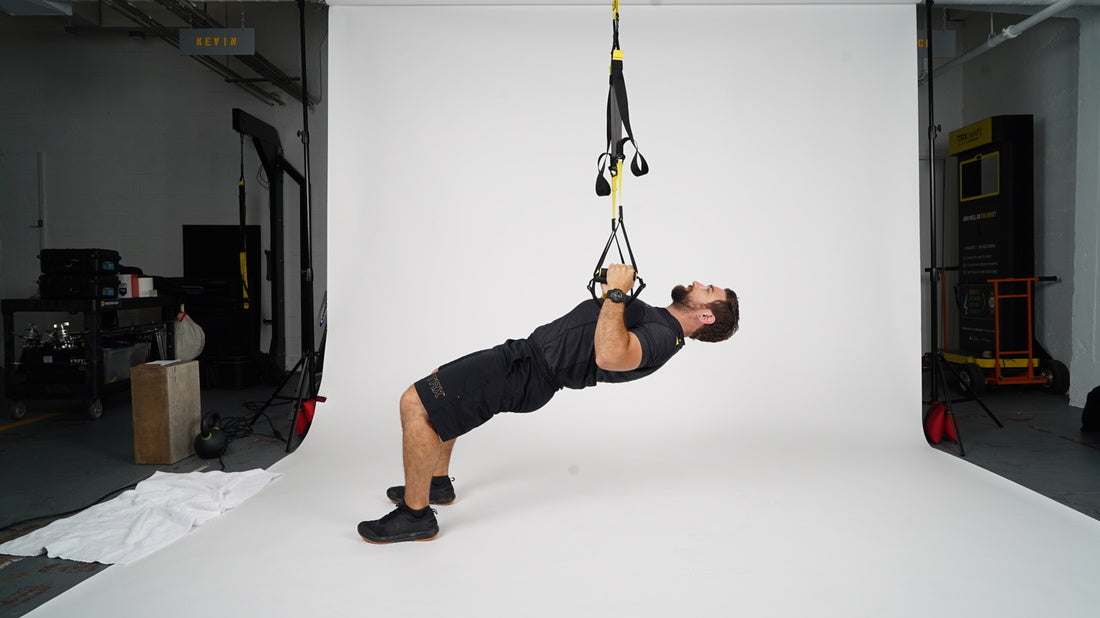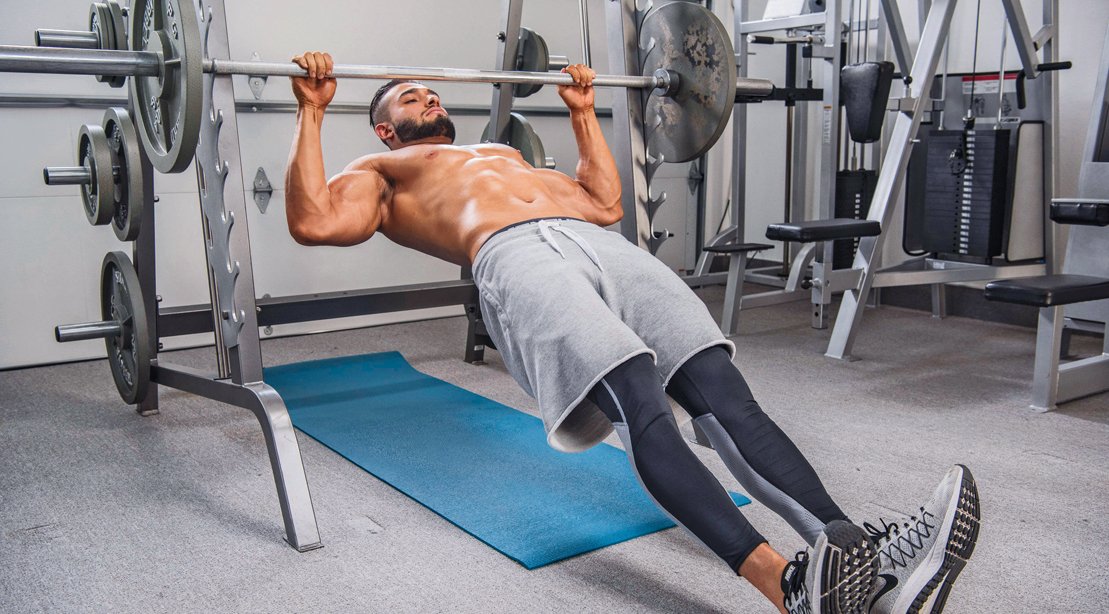The Seated Cable Row is a strength training exercise targeting the back muscles. It involves pulling a weighted handle towards the torso while seated.
Embarking on a journey to enhance back strength and improve posture? Look no further than the Seated Cable Row, a staple exercise in fitness routines aimed at sculpting a powerful, well-defined back. This exercise not only targets major muscles like the latissimus dorsi and rhomboids but also engages the biceps and forearms as secondary movers.
Regular incorporation of the Seated Cable Row into your workout can result in better muscle balance and core stability, contributing to overall functional fitness. It’s a go-to movement for athletes and gym-goers alike, seeking to build a robust upper body and enhance their pulling strength. Perfect for both beginners and advanced trainers, this versatile exercise can be modified through various grips and attachments to keep your muscles challenged and progress consistent.

Credit: www.trxtraining.com
The Essentials Of Seated Cable Row
Mastering the seated cable row is a game-changer for a strong, sculpted back. The move is simple yet powerful, combining strength and precision. It enhances posture, supports daily movements, and builds upper-body strength. Proper form and consistent practice are key.
Benefits For Your Back
Why is the seated cable row so beneficial? It works wonders for your back in numerous ways:
- Improves Posture: Strengthens muscles that keep you upright.
- Reduces Back Pain: Builds a supportive muscle framework.
- Enhances Strength: Allows for heavier lifts and builds back muscle. Muscle Groups Targeted
- Lats (Latissimus Dorsi): Broad muscles on your back.
- Rhomboids: Connect your shoulder blades to your spine.
- Traps (Trapezius): Extend from your neck to mid-back.
- Biceps: Front of the upper arm.
- Forearms: Grip strength and control.
Muscle Groups Targeted
The seated cable row hits multiple muscle groups at once:

Credit: www.menshealth.com
Setting Up For Success
Success with the Seated Cable Row starts with proper setup.
A good setup leads to better muscle engagement and reduced injury risk.
Choosing The Right Weight
Selecting an appropriate weight is crucial for effective exercise. It should challenge muscles without straining them. Follow these steps:
- Start light to focus on form.
- Gradually increase weight to find your sweet spot.
- Ensure full movement control through all reps.
Adjusting The Seat And Chest Pad
Comfort and posture are vital for this workout. Set up the seat and chest pad using these tips:
- Seat height: Align handles with mid-chest.
- Chest pad distance: Allow full arm extension without locking elbows.
- Secure footing: Place feet flat on platform.
Mastering The Technique
Are you ready to ramp up your back workout with the Seated Cable Row? Mastering the technique is key for maximum gains and safety. Let’s dive into the details and ensure each rep counts.
The Correct Stance
A strong foundation is vital before you start pulling. Sit down on the machine with your feet flat against the footrests. Knees should be slightly bent, not locked. Pivot at your hips to lean forward – this is your power pose. Keep your back straight, chest out, and shoulders down.
- Feet flat and firm
- Knees slightly bent, never locked
- Hips pivoted, lean forward slightly
- Back straight, chest out
- Shoulders down, relaxed
Pulling The Cable: A Step-by-step Guide
Now you’re set, it’s time to row! A steady pace trumps speed for building muscle.
- Grab the handle with both hands, arms extended.
- Keep your torso stationary, pull the handle towards your waist.
- Retract your shoulder blades as the cable moves.
- Engage your core, exhale as you pull.
- Halt the motion when the handle touches your abdomen.
- Slowly extend your arms back, inhaling.
- Pause at the start point without losing form.
- Repeat for the desired number of reps.
Consistency with your form delivers results. Keep each move controlled. Let your back do the work. Save your biceps for curls. Keep a steady rhythm from start to finish. This completes your guide to a perfect Seated Cable Row.
Common Mistakes To Avoid
Embarking on the journey of Seated Cable Row, it’s crucial to sidestep common pitfalls. These errors not only hinder progress but can also cause injuries. Identifying these gaffes ensures a safer, more effective workout. Let’s dive into the typical missteps to avoid and how to execute the seated cable row with finesse.
Overextending The Arms
Pulling the cable too far back is a frequent mistake. It strains the shoulders and diminishes the focus on the back muscles. Here’s how to do it right:
- Keep elbows close to the body.
- Stop the pull when hands are near the abdomen.
- Avoid locking out the elbows.
Neglecting The Core
A strong core stabilizes your movement. Forgetting to engage the core can compromise form. To keep the core active:
- Brace your abdominals throughout.
- Maintain a slight curve in your lower back.
- Resist leaning back too far.
Incorrect Posture
Slouching or rounding the back can lead to discomfort and poor muscle targeting. A proper posture entails:
| Do | Do Not |
|---|---|
| Keep your chest up | Round your shoulders |
| Set your shoulders back | Slouch your back |
| Look straight ahead | Let your head droop |
Advanced Variations And Progressions
Seated Cable Rows are a staple in back training. To keep muscle gains coming, advanced variations and progressions are key. They push your muscles past previous limits. Ready to up your game? Let’s dive into advanced moves that’ll challenge your back like never before.
Incorporating Drop Sets
Drop sets force muscles to fatigue by decreasing weight without rest. This method extends each set past the point of muscle failure. It recruits more muscle fibers and boosts growth. Here’s how to do it:
- Start with your heaviest set of Rows.
- Once you hit failure, quickly reduce the weight by 10-20%.
- Continue rowing until failure.
- Repeat the weight reduction and rowing process 2-3 times.
Utilizing Different Grips And Attachments
Vary your grip to challenge your back muscles from different angles. Each grip and attachment works the muscles slightly differently. Try these:
- Wide Grip: Targets the upper back more.
- Close Grip: Focuses on the middle back and allows for a greater range of motion.
- Neutral Grip: Puts less stress on the shoulder joints.
Attachments to experiment with include:
| Attachment | Benefits |
|---|---|
| Straight Bar | Engages both back width and thickness. |
| V-Bar | Allows a natural grip, focusing on the lower lats. |
| Rope | Improves grip strength and engages deeper into the rhomboids. |
Mix these advanced variations into your routine. Watch your back strength and size soar to new heights.

Credit: www.amazon.com
Integrating Seated Cable Rows Into Your Routine
Integrating Seated Cable Rows into Your Routine can be a game-changer for your back development. This exercise targets multiple muscles with one smooth motion. By pulling a weighted handle towards your torso, you work out your lats, rhomboids, and traps. It’s not just about strength; seated cable rows also enhance muscle definition and improve posture.
Creating A Balanced Back Workout
A well-rounded back workout combines various exercises. Seated cable rows sit at its core. Ensure you also include:
- Pull-ups for upper back strength
- Deadlifts to engage your lower back
- Dumbbell rows for unilateral training
This mix promotes muscle balance. It also prevents overuse injuries. Aim for a mix that challenges both your strength and endurance for best results.
Frequency And Repetitions For Optimal Gains
Structuring your routine is crucial for back growth. Include seated cable rows 2-3 times weekly.
| Experience Level | Sets | Repetitions | Rest Interval |
|---|---|---|---|
| Beginner | 3-4 | 12-15 | 1-2 mins |
| Intermediate | 3-5 | 10-12 | 1-1.5 mins |
| Advanced | 4-6 | 6-10 | 1 min or less |
Vary your repetition ranges and weights. This approach stimulates muscle growth more efficiently.
Frequently Asked Questions On Seated Cable Row
What Muscles Does The Seated Cable Row Work?
The seated cable row primarily targets the latissimus dorsi, rhomboids, and trapezius muscles. It also engages the biceps and forearms for pulling action.
Are Seated Cable Rows Worth It?
Seated cable rows are valuable for building back muscles and improving posture. They target multiple muscle groups and offer adjustable resistance for all fitness levels. Incorporating them into workouts can enhance overall strength and muscular definition.
How To Do Cable Row Correctly?
Start by sitting down at the cable row machine with knees slightly bent. Grab the handle using an overhand grip. Keep your back straight, chest out, and shoulders down. Pull the handle towards your torso, then slowly return to the starting position.
Repeat the movement.
What Grip Is Best For Seated Cable Row?
The best grip for seated cable rows is a neutral grip, where palms face each other. This position reduces wrist strain and effectively targets the back muscles.
Conclusion
Embracing the seated cable row can significantly enhance your back strength and posture. Remember, consistency and proper technique reign supreme. Incorporate this exercise into your routine to witness tangible benefits. Elevate your fitness journey by mastering the seated cable row—your back will thank you.

